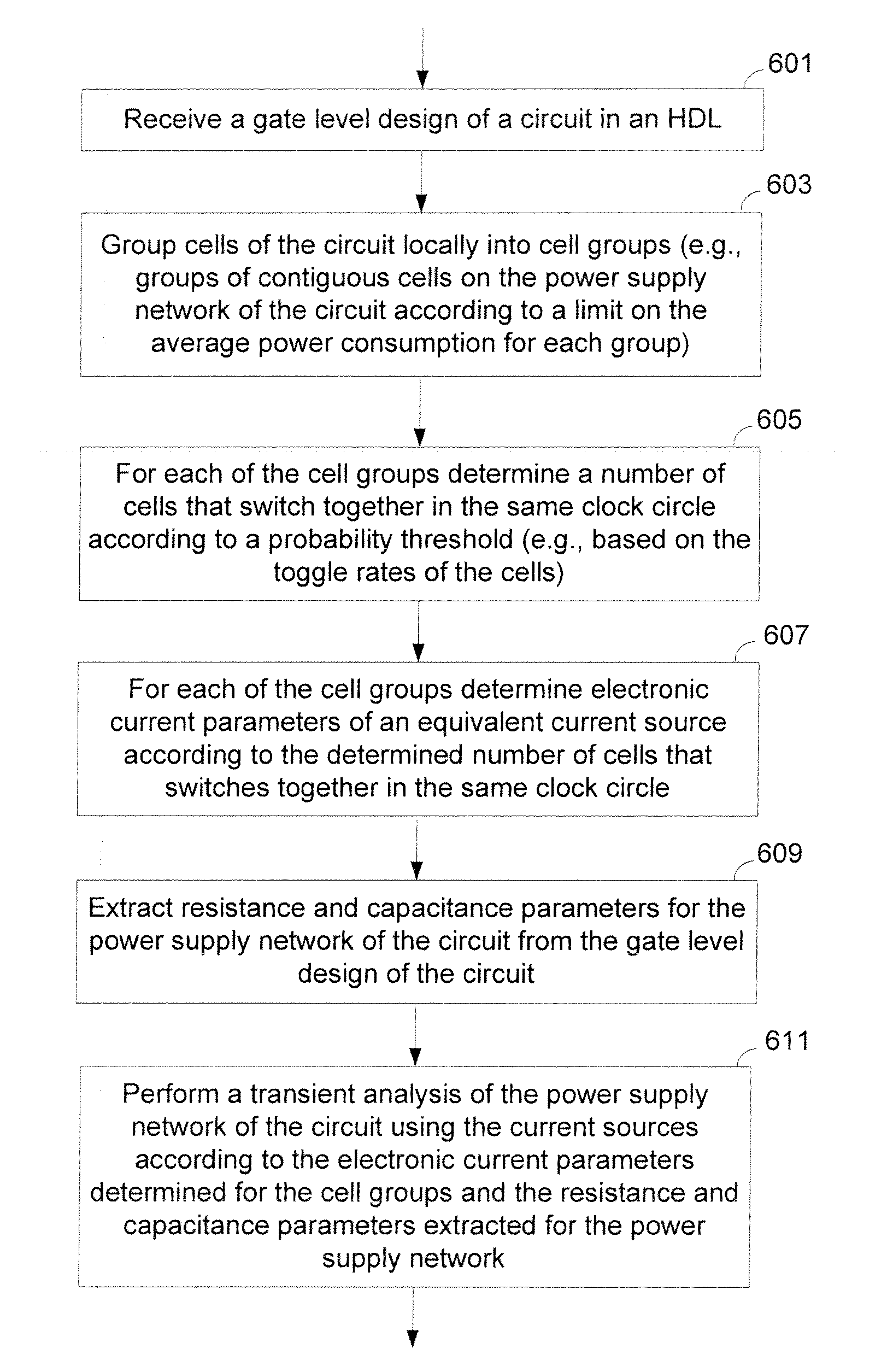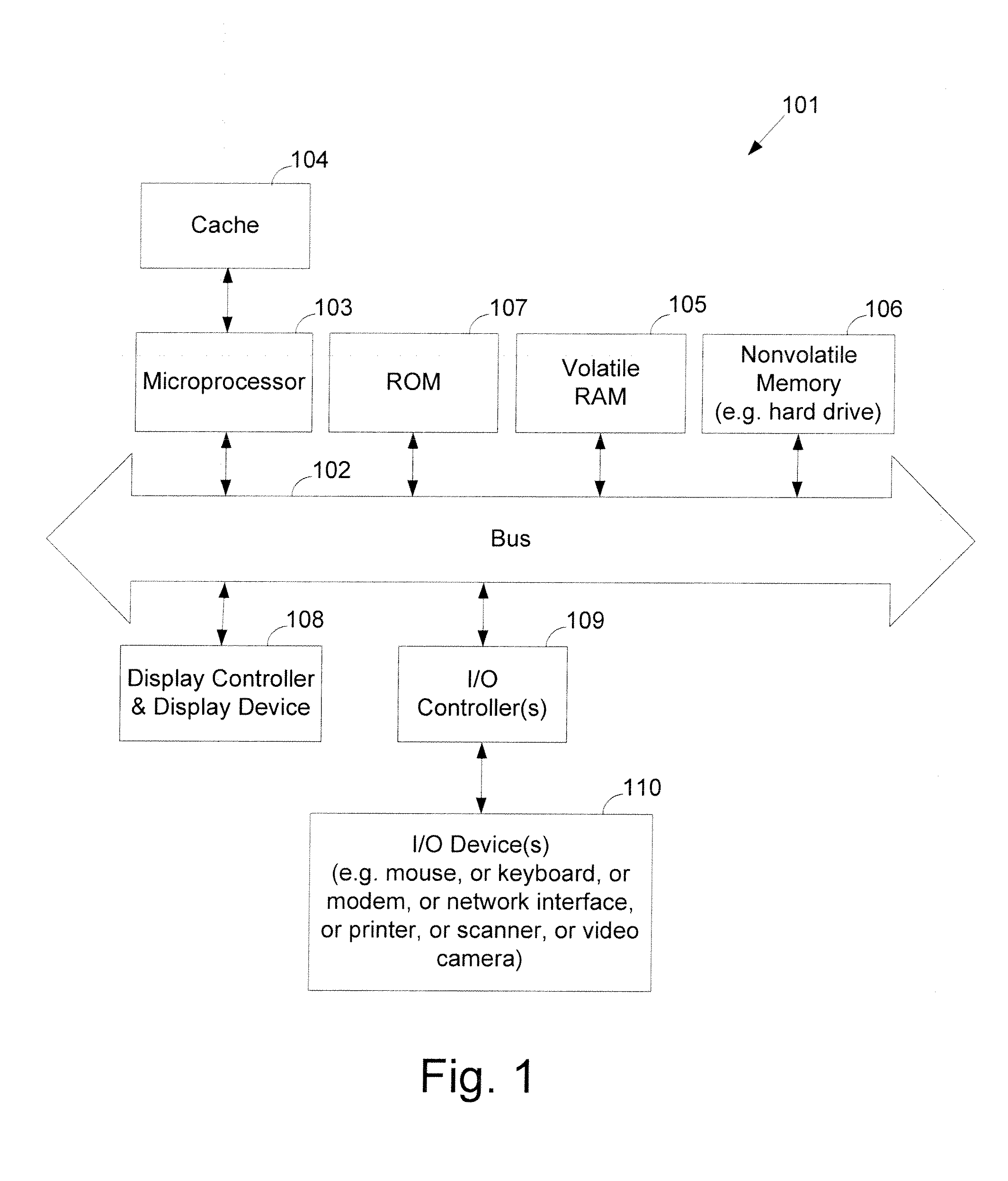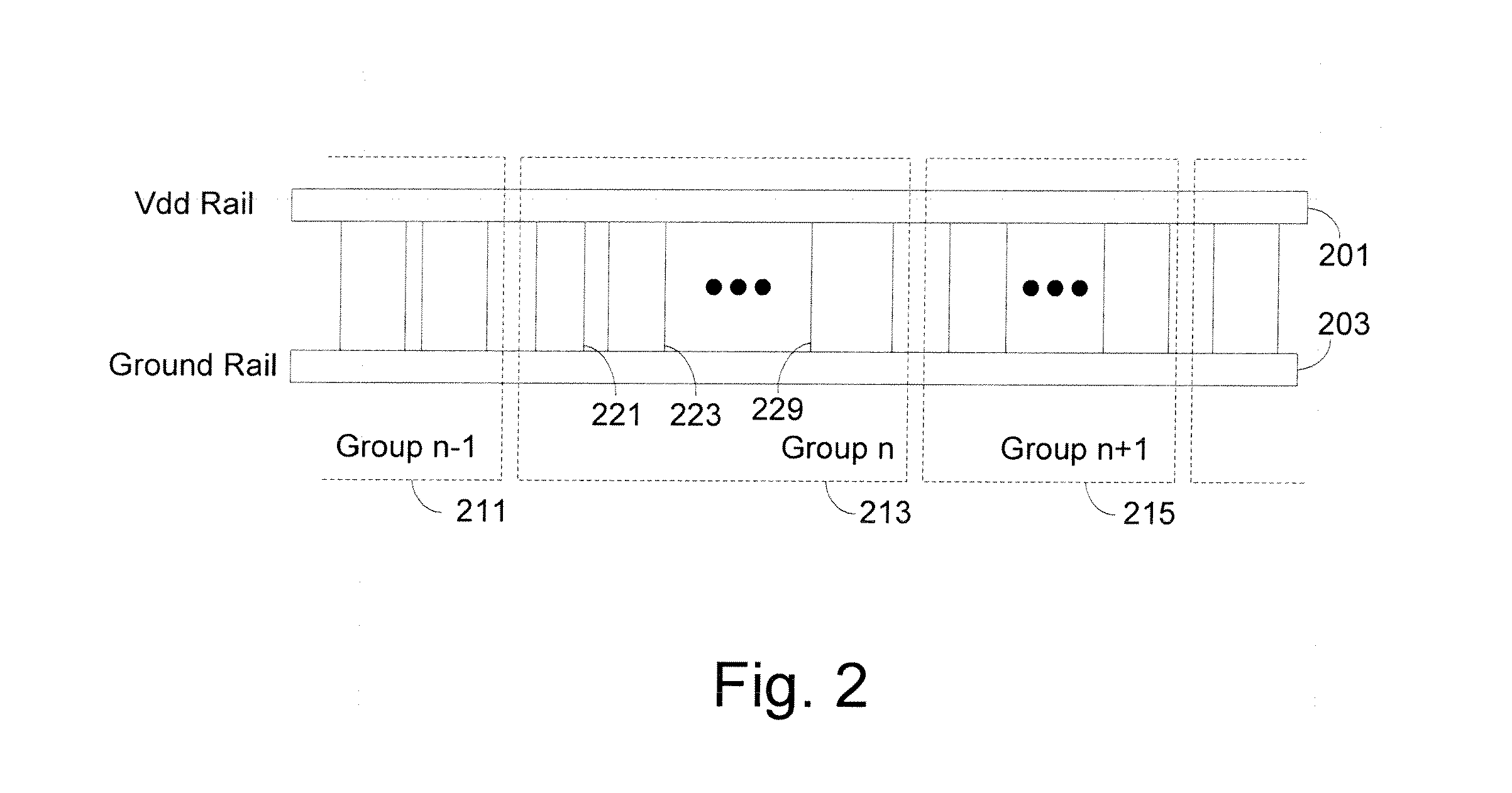Methods and apparatuses for transient analyses of circuits
a technology of transient analysis and circuit, applied in the field of automatic circuit analysis, can solve the problems of increasing power dissipation in integrated circuits, increasing power dissipation, and cost of larger power supply currents
- Summary
- Abstract
- Description
- Claims
- Application Information
AI Technical Summary
Benefits of technology
Problems solved by technology
Method used
Image
Examples
Embodiment Construction
[0034] The following description and drawings are illustrative of the invention and are not to be construed as limiting the invention. Numerous specific details are described to provide a thorough understanding of the present invention. However, in certain instances, well known or conventional details are not described in order to avoid obscuring the description of the present invention. References to one or an embodiment in the present disclosure are not necessarily references to the same embodiment; and, such references mean at least one.
[0035] At least one embodiment of the present invention merges groups of contiguous cells in such a way that the time-varying behavior is preserved while reducing the number of independent load currents that have to be analyzed to produce accurate results with minimal run time and memory usage. In one embodiment, the time varying switching currents for the cell groups are estimated based on a probabilistic approach without a detailed simulation o...
PUM
 Login to View More
Login to View More Abstract
Description
Claims
Application Information
 Login to View More
Login to View More - R&D
- Intellectual Property
- Life Sciences
- Materials
- Tech Scout
- Unparalleled Data Quality
- Higher Quality Content
- 60% Fewer Hallucinations
Browse by: Latest US Patents, China's latest patents, Technical Efficacy Thesaurus, Application Domain, Technology Topic, Popular Technical Reports.
© 2025 PatSnap. All rights reserved.Legal|Privacy policy|Modern Slavery Act Transparency Statement|Sitemap|About US| Contact US: help@patsnap.com



